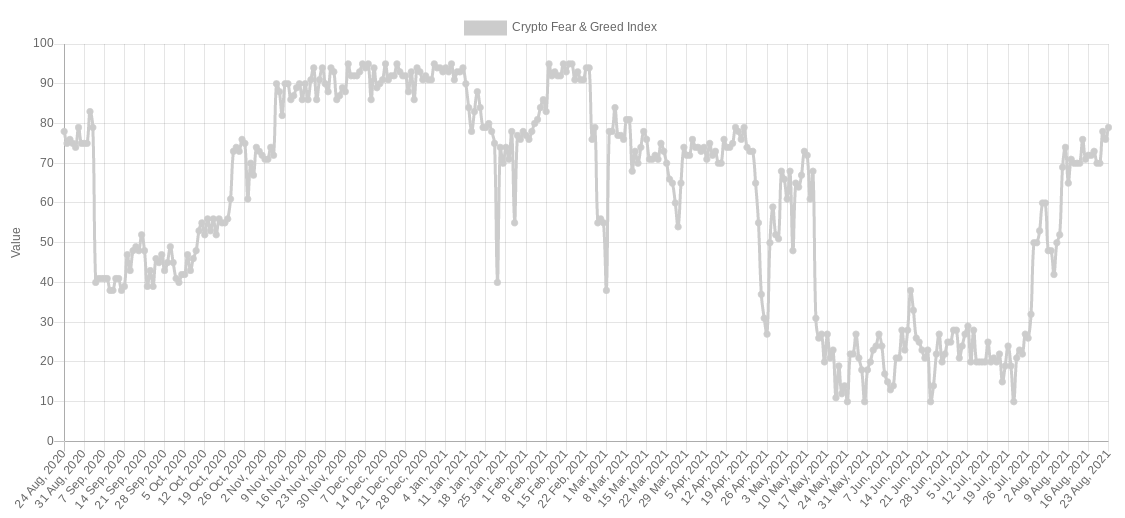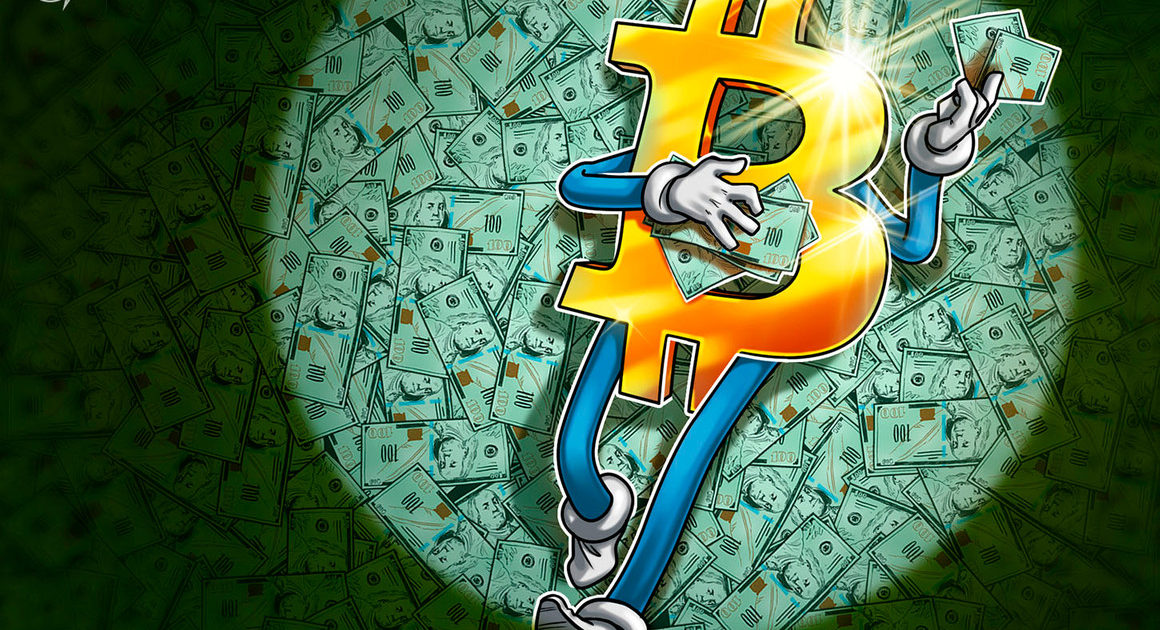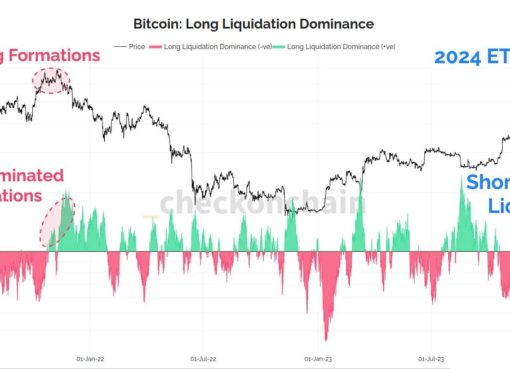Bitcoin (BTC) is back at $50,000 as a new week gets underway with a bang.
After a strong weekend, Bitcoin finally crossed the long-awaited $50,000 mark overnight on Aug. 22.
Along with a firm sense of deja vu, traders are naturally curious as to what will happen next — and crucially whether Bitcoin has bitten off more than it can chew with its latest price surge.
With the United States Federal Reserve’s annual Jackson Hole summit lined up this week, macro triggers could combine with internal sources of contention to spark a hectic week for cryptocurrency markets.
Cryptox takes a look at five BTC price factors worth considering in the coming days.
$50,000 Bitcoin: What could go wrong?
There was no shortage of concern about Bitcoin failing to crack $50,000 this weekend.
Everything from low volumes to a bearish Wyckoff distribution event was visible on social media from those unconvinced of market strength.
In the event, however, Bitcoin clipped and held the psychologically significant price level in classic fashion.
“If btc can break out from here. People over trading will lose their Btc and hodlers will win,” popular trader Pentoshi summarized in one of various tweets Sunday.
“I said this one other time before it did a relentless 6x. Know when to trade and when not to trade. All you have to do is do nothing. My strat is to do nothing when it happens.”
Pentoshi channeled various references to Q4 2020, hinting at similarities between market composition now and the start of the main phase of the latest Bitcoin bull run.
This “springboard” was also apparent when BTC/USD hit $50,000 for the first time in February — but it took time for the level to become firm support and provide the foundation for a trip to current all-time highs of $64,500.
As such, should BTC/USD see a fresh pullback, it will likely be fleeting, Pentoshi argues.
“Probably won’t be much looking back if any,” he added.
“Right now is all about accumulation. When markup begins there is only vertical accumulation.”
Tapering rumors fly as virtual Fed summit nears
Macro cues will likely all come from the U.S. Fed this week.
The annual Jackson Hole gathering of top financial figures — now set to be virtual — is rumored to focus extensively on economic policy changes stemming from the Coronavirus pandemic.
Specifically, markets will want to know whether any tapering of asset purchases is on the cards, and when that might take place.
With such a move priced in to some extent, only something unexpected could send markets spinning, analysts suggest.
“They’re still very, very dovish. They’re slightly less dovish,” Garrett Melson, a portfolio strategist at Natixis Investment Managers Solutions, told Yahoo! Finance last week.
“But that’s a little semantics at this point. Taper is very well documented and well known. We know it’s coming. It’s just a matter of timing and really shouldn’t surprise many investors out there.”
Stocks were already weakening at the end of last week thanks to tapering fears, with the start of trading in the U.S. yet to come at the time of writing.
Gold, which suffered heavily this month while Bitcoin surged, has meanwhile made up for much of its recently lost ground.
As Cryptox reported, gold bugs remain convinced that the precious metal will continue to attract investment in the long term, with safe-haven seekers staying away from Bitcoin due to volatility.
Has China hastened a Bitcoin price top?
If Bitcoin spot price action has failed to impress you, there is little debate about the strength of its network fundamentals.
Hash rate and difficulty, months into a broad recovery, outdid themselves over the past week.
Versus last Monday, the hash rate has added 8 exahashes per second (EH/s), estimates show, equating to a roughly 5% overall increase in computing power dedicated to mining.
At 121 EH/s, the hash rate is thus just 47 EH/s away from the all-time highs seen before the China mining rout took hold in May.
“Bitcoin hash rate is continuing its recovery from one of the largest infrastructure displacements in modern history—with roughly 45% of the Bitcoin mining industry, billions of dollars, relocating continents as the network on continued as normal,” popular Twitter account Documenting Bitcoin wrote last week.
“Bitcoin had zero downtime.”
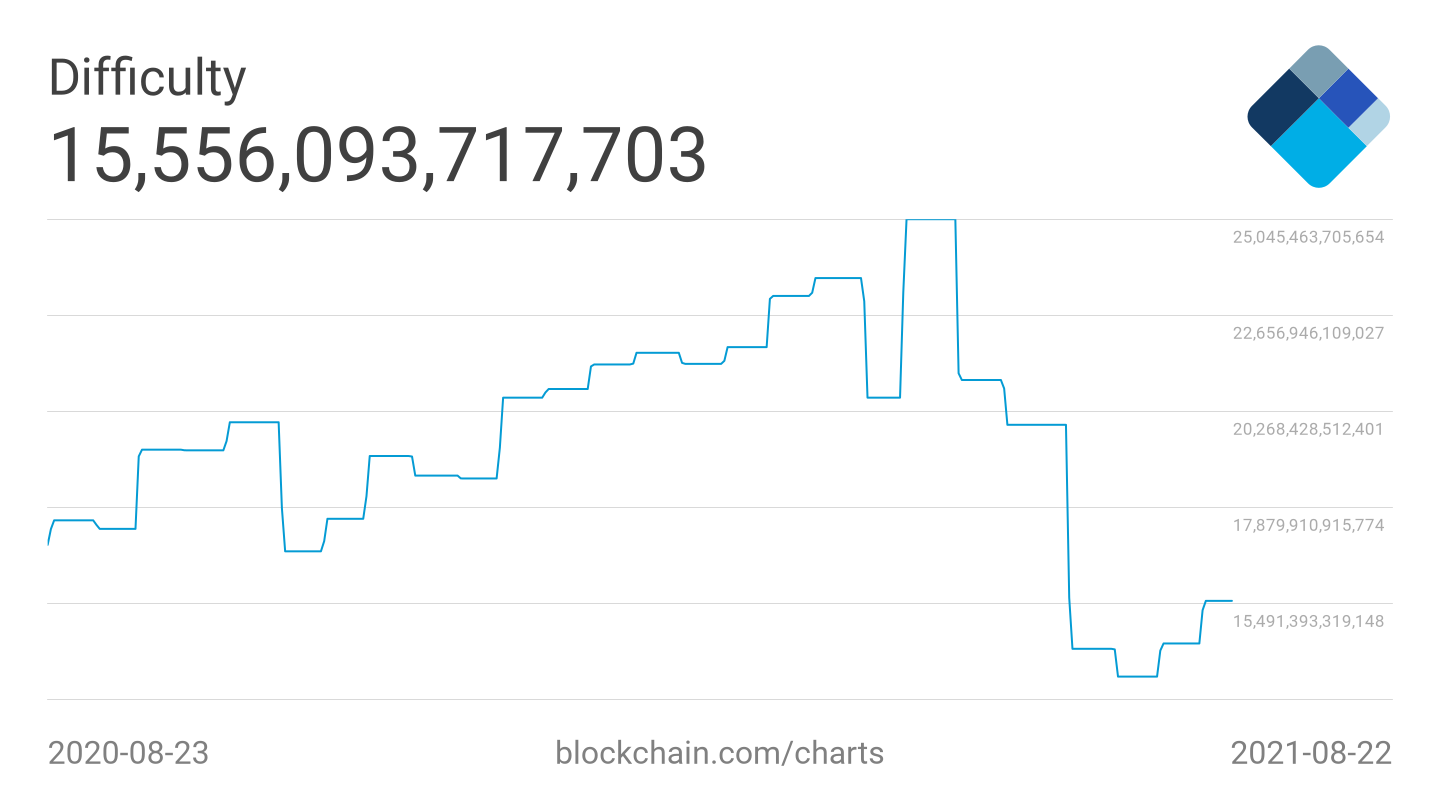
Not only zero downtime, but zero loss of demand — with the return of hashing power has come difficulty adjustments, which have only served to strengthen network security and increase competition, all as planned.
With that, the difficulty is set to increase a third time in a row in two days’ time, this time by around 9% — a post-China high.
This is firmly bullish to the ears of those worried about long-term faith in mining profitability, and likewise the role that China played in Bitcoin’s operation.
However, comparing this year’s post-halving bull run to previous ones, one commentator highlighted a potential point of concern.
“Around 120k-138k blocks AFTER miner capitulation bottom in each bear market, bitcoin has topped out,” Parabolic Trav noted Sunday.
“120k-138k blocks builds up miner inventory enough (after they hodl for a while) to crush the market with. This cycle China exodus forced inventory to market early. Implications?”
Should the China episode have hastened the bull run this time around, a potential second price peak could likewise come earlier than many anticipate. As Cryptox reported, however, theories contend that 2021 will mimic 2013 in producing a “double bubble” type BTC price top with two peaks, the second coming at the end of the year or perhaps even later.
Exchange flows return to dominate
On the topic of 2020 comparisons, meanwhile, there is another trend clearly repeating last year’s bull run “springboard.”
Bitcoin exchange reserves have dropped heavily in recent weeks after China temporarily reversed the overall downtrend.
While exhibiting mixed behavior throughout 2021, investors are now withdrawing BTC in large enough quantities for those withdrawals to dominate the landscape, on-chain analytics firm Glassnode notes.
“Bitcoin exchange flows have returned to a dominance of outflows through August as investors withdraw BTC,” it revealed late last week.
“The market has transitioned through a number of phases of exchange flow dominance over the last year, with outflow dominance last seen in late 2020.”
This ties in with a popular narrative focusing on accumulation at current price levels, suggesting overwhelming faith in higher prices still to come.
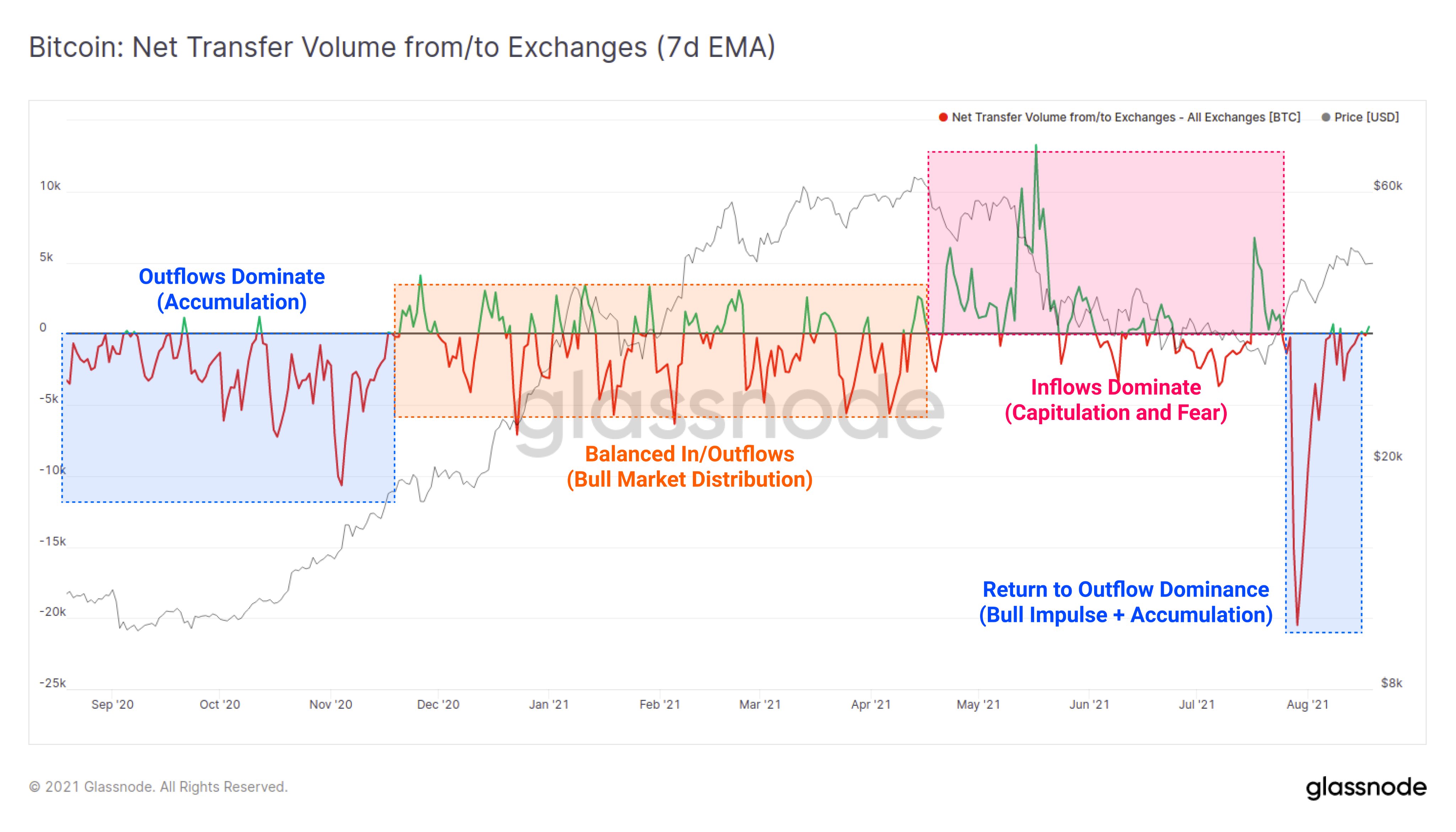
“Extreme greed” heightens its grip
“Extreme” emotions are back in the picture among crypto investors.
That’s according to the Crypto Fear & Greed Index, which this week is firmly within its “extreme greed” zone.
Related: Top 5 cryptocurrencies to watch this week: BTC, ADA, AVAX, CAKE, ATOM
While not quite at the top of its 0-100 scale, the Index now measures 79/100, just 15 points away from typically bullish peaks which preclude major price corrections.
The pace of change in Fear & Greed has been intense — just three weeks ago, it measured 42/100, denoting “fear” as the overall market emotion.
Monday’s reading is thus the highest since mid April, when Bitcoin was at its current all-time highs.
